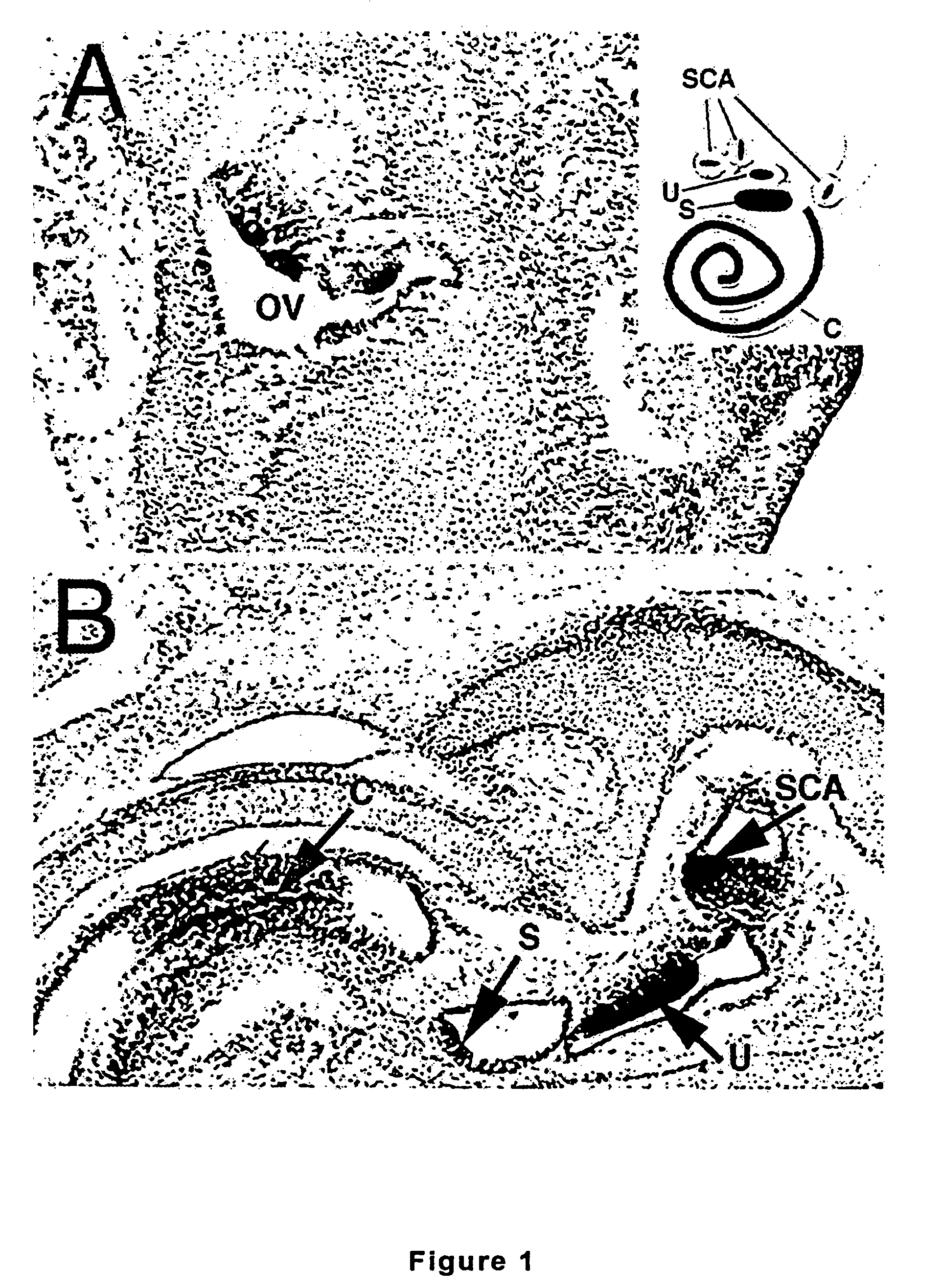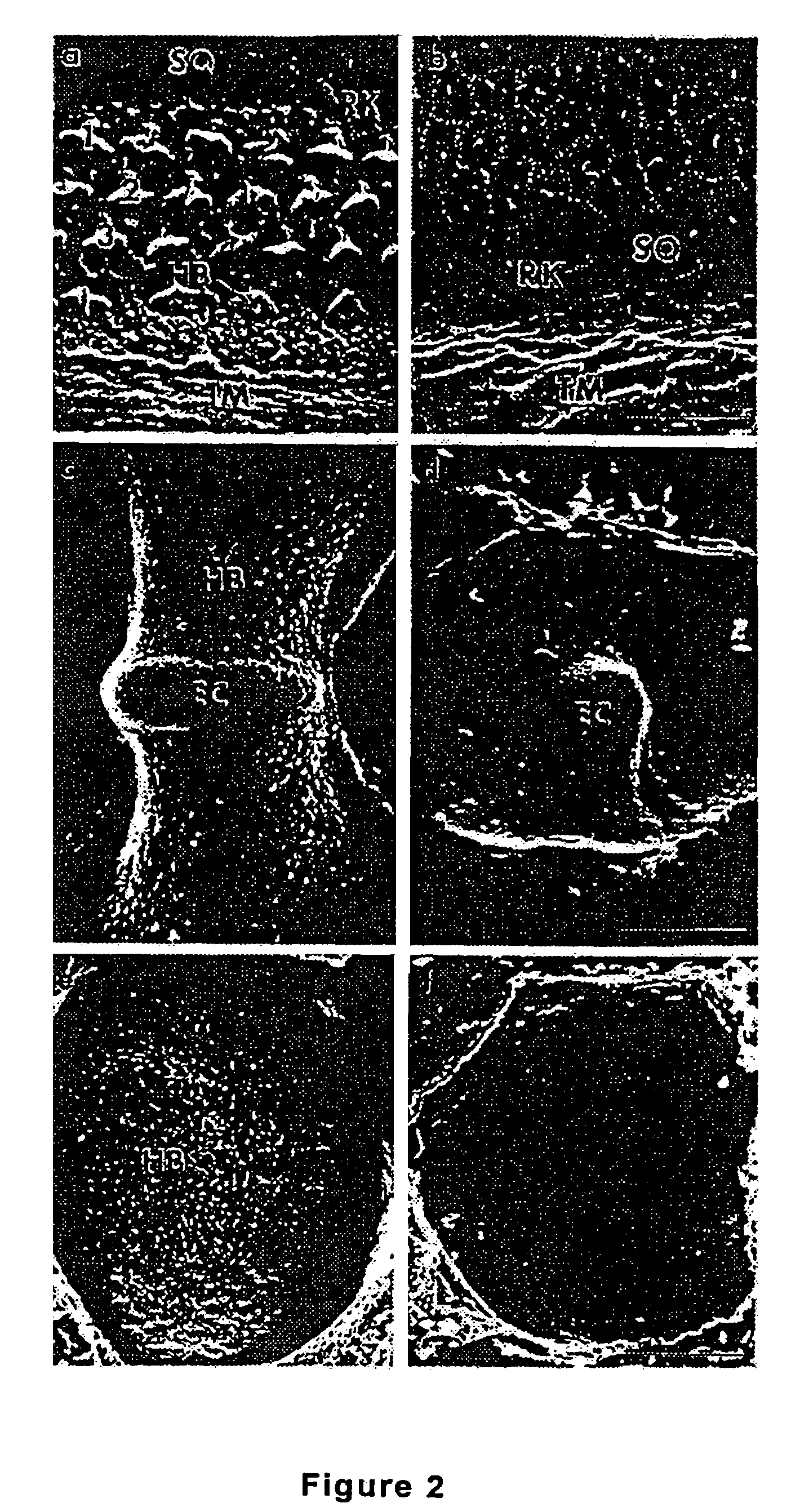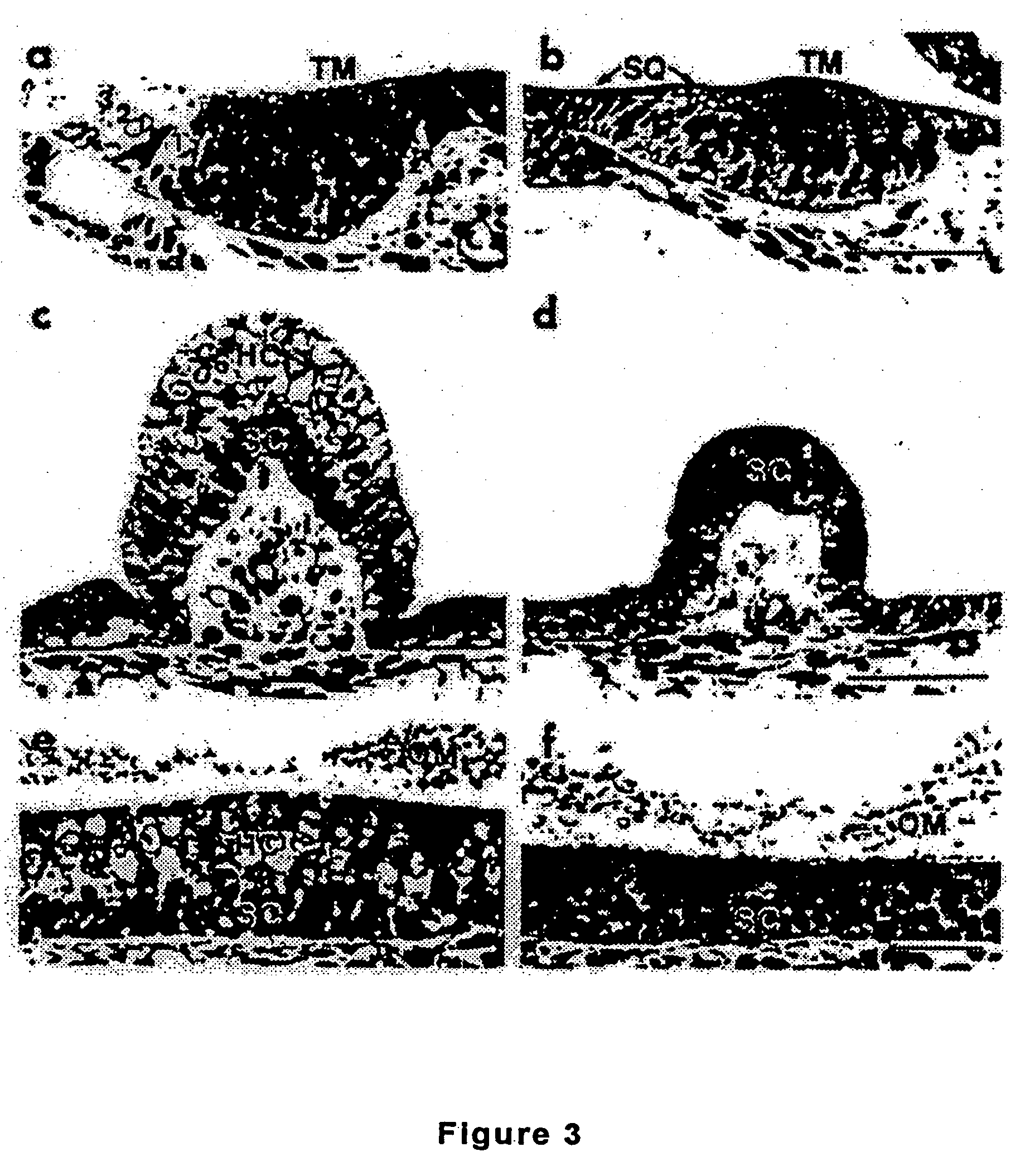Composition and methods for the therapeutic use of an atonal-associated sequence for deafness, osteoarthritis and abnormal cell proliferation
a technology of atonal association and sequence, applied in the field of gene diagnosis and therapy, can solve the problems of deafness and vestibular dysfunction, and lack of atonal function, and achieve the effect of high magnification of the region
- Summary
- Abstract
- Description
- Claims
- Application Information
AI Technical Summary
Benefits of technology
Problems solved by technology
Method used
Image
Examples
example 1
Mouse Atonal Homolog 1 (Math1)
[0161]It has been found that the present methods for the treatment of the hearing impaired have failed to address the problem directly, that is, the regeneration of auditory hair cell populations. The present invention in a preferred embodiment is directed to a member of the bHLH family, the Math1 gene or an another atonal-associated nucleic acid sequence, and its requirement for generation of cerebellar granule neurons and inner ear hair cells. This discovery has wide ramifications not only for understanding neurodevelopment but also for therapies for a variety of prevalent disorders, as described below.
[0162]The mouse atonal homolog 1 (Math1) is expressed in the precursors of the cerebellar granule neurons; a few cells in the dorsal portion of the developing spinal cord; the inner ear; Merkel cells (touch receptors on the skins); and joints. Overexpressing Math1 in an otherwise differentiated cell can induce the formation or differentiation into a pro...
example 2
Animal Model for Organogenesis
[0174]An effective animal model for deficiency in a gene that controls or ganogenesis will most often have both alleles stably inactivated so that, throughout embryogenesis, one or more tissues cannot revert to a functional wild-type allele. One method of generating animals with an altered genotype is gene targeting (Mansour et al., 1993), in which homologous recombination of newly introduced DNA sequence (i.e., the targeting sequence or construct) and a specific targeted DNA sequence residing in the chromosome results in the insertion of a portion of the newly introduced DNA sequence into the targeted chromosomal DNA sequence. This method is capable of generating animals of any desired genotype, and is especially useful for gene disruption (i.e., to “knock out”) at a specific chromosomal gene sequence by inserting a selectable marker into the gene or completely replacing the gene with another nucleotide sequence.
[0175]To knock out a genomic sequence, a...
example 3
Generation of Transgenic Math1 Mice
[0179]To detect subtle Math1 expression patterns not identified by RNA in situ hybridization, and thus further illuminate this gene's role during embryonic development, Math1 null alleles (Math1β-Gal / β-Gal) were generated by replacing the Math1 coding region with β-galactosidase (β-Gal).
[0180]The targeting construct, containing a lacZ cassette and a PGK-neo cassette (FIG. 7A), was used to replace the Math1 coding region. To delete the entire coding region of Math1, a targeting construct was generated that contained the 5′ and 3′ genomic flanking fragments as described previously (Ben-Arie et al., 1997) flanking a pSAbgal / PGK-neo cassette (Friedrich and Soriano, 1991). The construct is designed so that lacZ expression is driven by endogenous Math1 control elements, while an independent PGK promoter drives the expression of the selectable marker neo.
[0181]The construct was electroporated into ES cells and selection for neo was achieved with G418. Fou...
PUM
| Property | Measurement | Unit |
|---|---|---|
| time | aaaaa | aaaaa |
| volume | aaaaa | aaaaa |
| doubling time | aaaaa | aaaaa |
Abstract
Description
Claims
Application Information
 Login to View More
Login to View More - R&D
- Intellectual Property
- Life Sciences
- Materials
- Tech Scout
- Unparalleled Data Quality
- Higher Quality Content
- 60% Fewer Hallucinations
Browse by: Latest US Patents, China's latest patents, Technical Efficacy Thesaurus, Application Domain, Technology Topic, Popular Technical Reports.
© 2025 PatSnap. All rights reserved.Legal|Privacy policy|Modern Slavery Act Transparency Statement|Sitemap|About US| Contact US: help@patsnap.com



